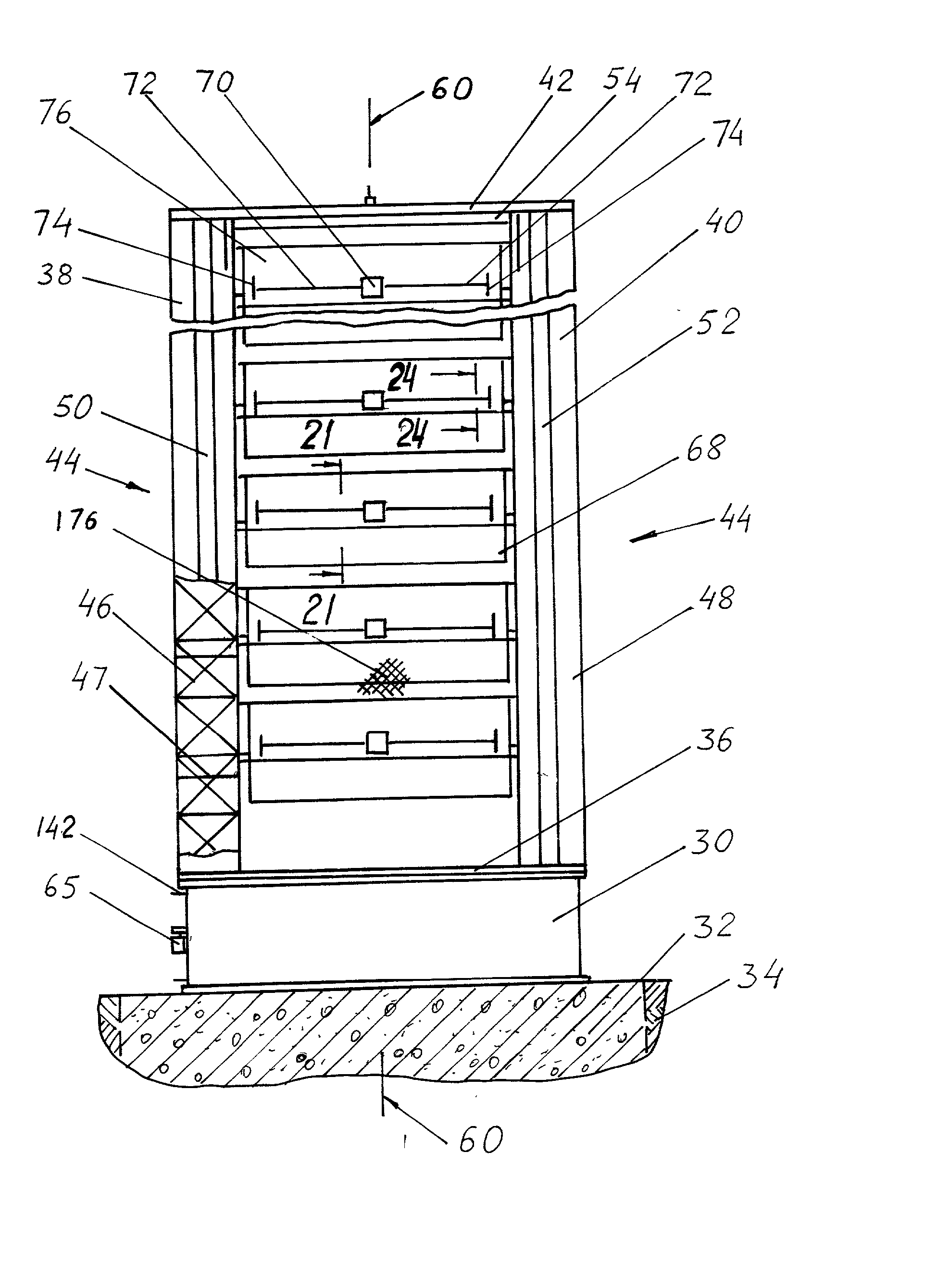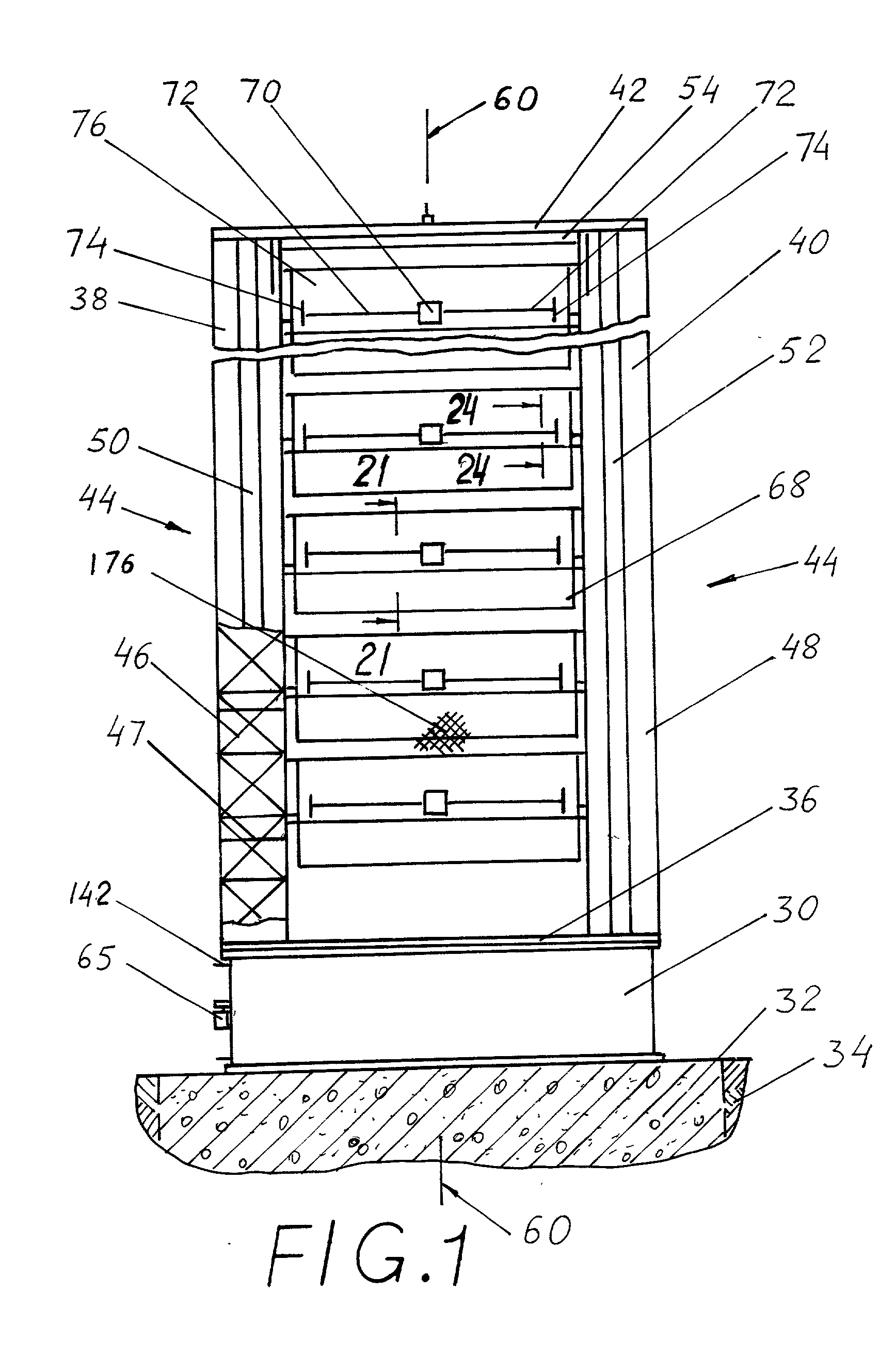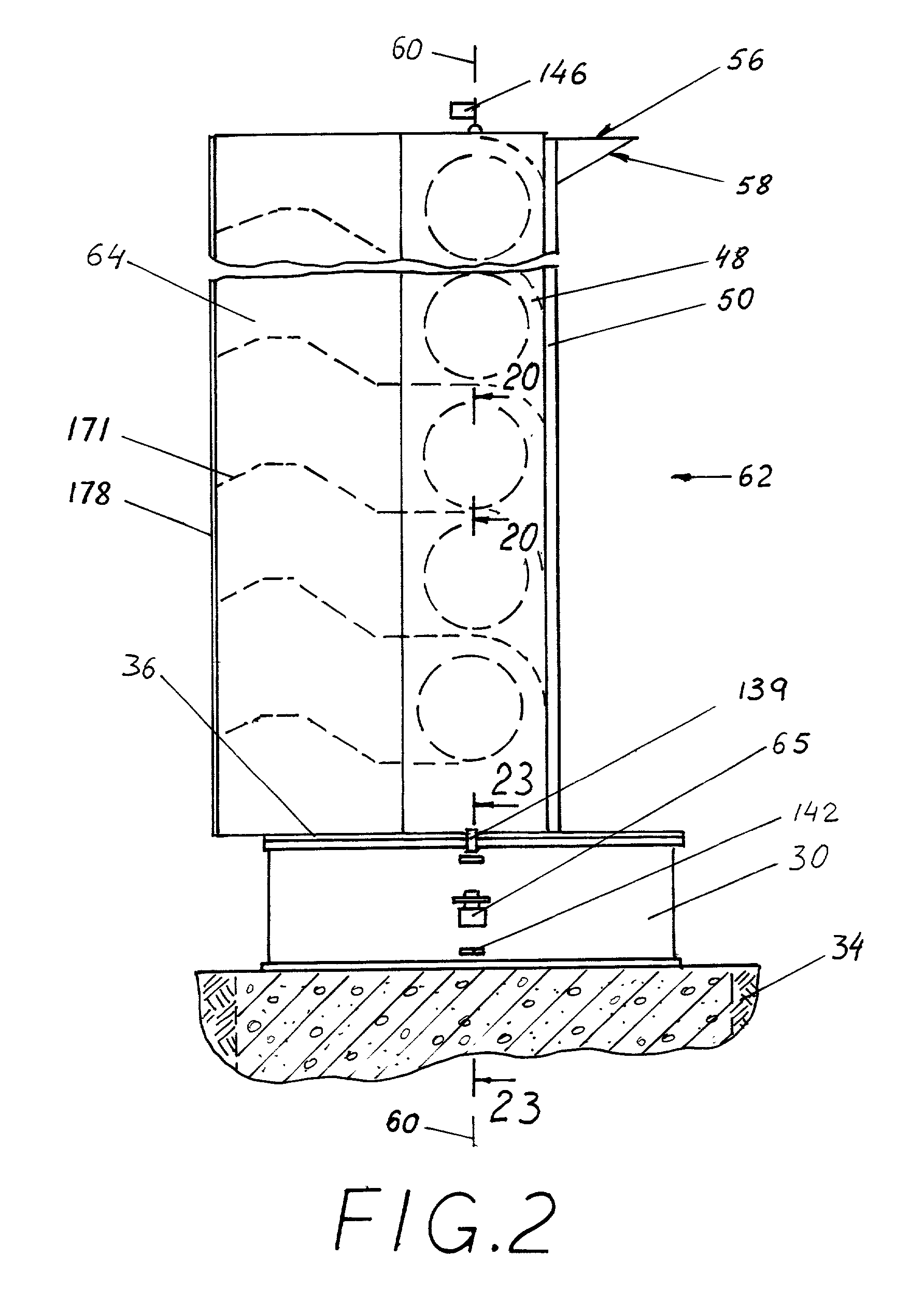Wind power plant
a wind power plant and turbine technology, applied in the direction of rotors, greenhouse gas reduction, vessel construction, etc., can solve the problems of not providing electrical energy, not being able to use all the energy of the swept area, and not being able to provide us with a solution, so as to increase the efficiency of the turbine and increase the speed of the wind
- Summary
- Abstract
- Description
- Claims
- Application Information
AI Technical Summary
Benefits of technology
Problems solved by technology
Method used
Image
Examples
Embodiment Construction
Of The Invention 1) Reference Numerals In Drawings 30 base 32 concrete frame 34 ground 36 horizontal platform 38 left tower 40 right tower 42 roof 44 housing 46 framework 47 floor 48 decorative panel 50 left shaft for elevators & stairs 52 right shaft for elevators & stairs 54 crane 56 beam 58 strut 60 vertical axis 62 general direction of the wind 64 wind tail 65 servomotor 65A electro-magnetic clutch 65B gear wheel 65C gear track 65D window 68 turbine 70 power drive 72 shaft 74 gear wheel 76 deflector 77 front cutting edge of deflector 78 back cutting edge of deflector 80 horizontal axis of rotation of rotor 82 left disk 84 right disk 86 tube 87 light framework 88 blade 89 strut 90 rotor 91 air gap between blade and tube 92 bearing 94 hub 96 collar 98 flange of hub 100 bolt 104 fixing plate 106 bracket 108 back deflector 112 governor 114 wheel of governor 116 track 117 front cutting edge of governor 118 gear track 120 permanent or electrical magnet 122 coil 123 air gap between mag...
PUM
 Login to View More
Login to View More Abstract
Description
Claims
Application Information
 Login to View More
Login to View More - R&D
- Intellectual Property
- Life Sciences
- Materials
- Tech Scout
- Unparalleled Data Quality
- Higher Quality Content
- 60% Fewer Hallucinations
Browse by: Latest US Patents, China's latest patents, Technical Efficacy Thesaurus, Application Domain, Technology Topic, Popular Technical Reports.
© 2025 PatSnap. All rights reserved.Legal|Privacy policy|Modern Slavery Act Transparency Statement|Sitemap|About US| Contact US: help@patsnap.com



